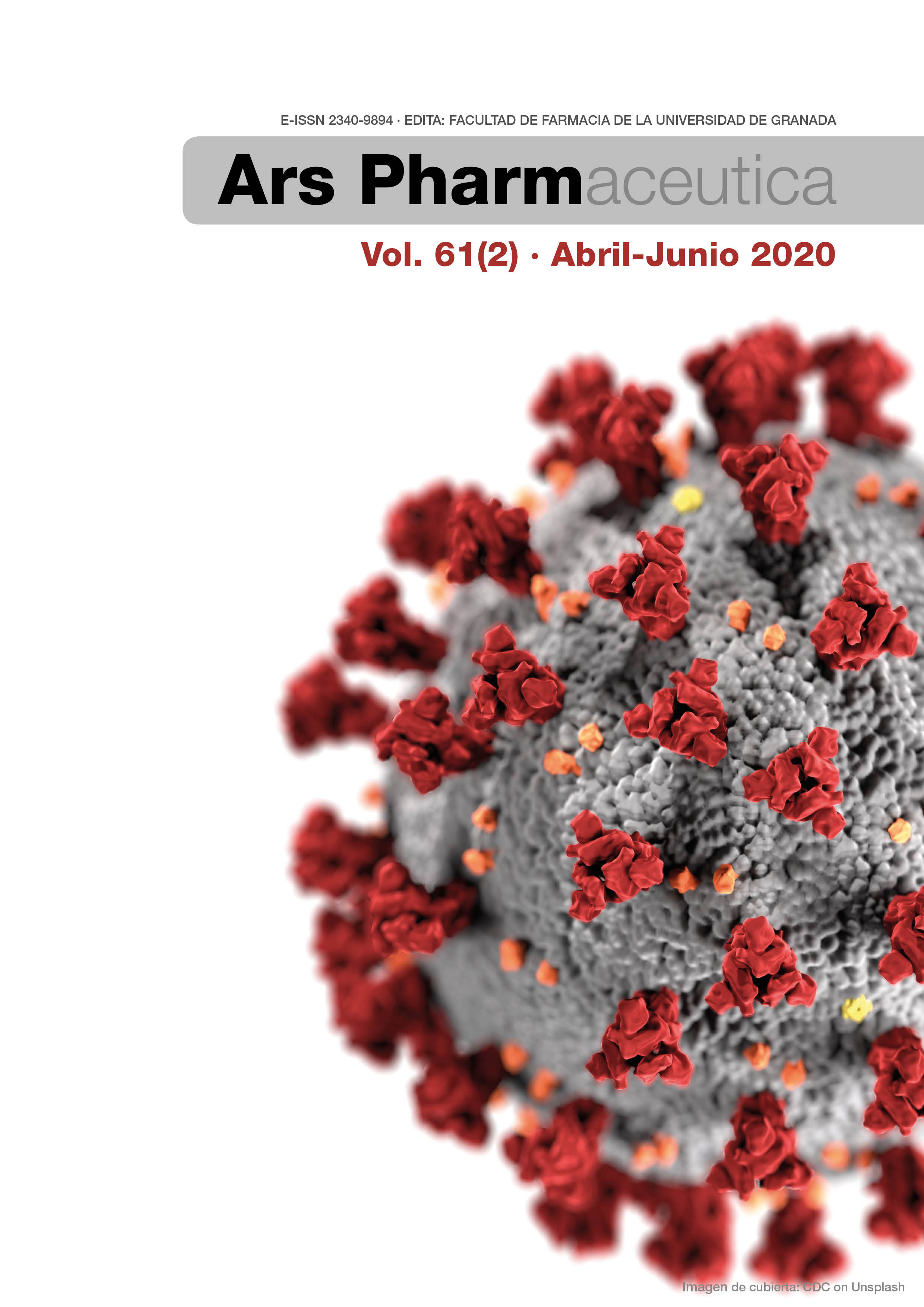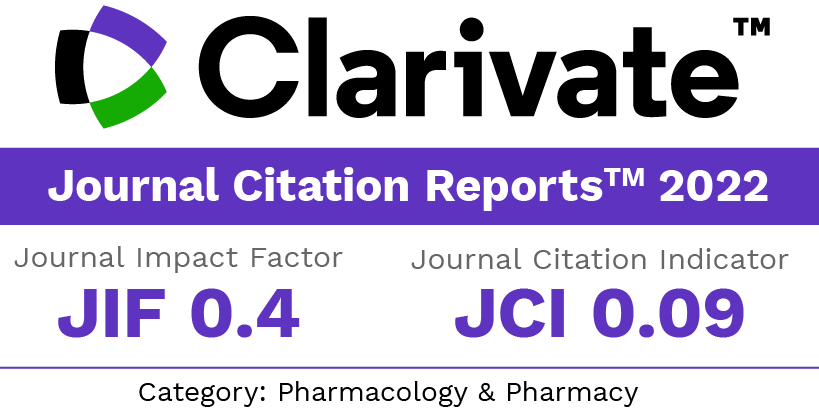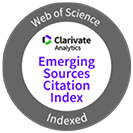A prospective interventional study on comorbidities, drug – drug interactions and its management among cancer patients
Keywords:
Drug Interactions, Cancer, ComorbidityAbstract
Introduction: Drug-Drug interactions (DDI) may cause considerable adverse drug reactions and potentially lead to an increased or decreased clinical effect of a given drug and increases the cost of management. Cancer patients are at high risk of such DDIs because they commonly receive a high number ofdrugs concomitantly, including other cytotoxic agents, hormonal agents, targeted agents, and supportive care agents among medication prescribed to treat comorbidities, especially for elderly patients.
Objetive The objective of this study is to evaluate the incidence of comorbidities and the role of clinical pharmacist inpreventing DDIs in a group of cancer patients.
Materials and Methods: A prospective – observational study was conducted in a multispecialty hospitalfor a period of 8 months among 100 cancer inpatients of oncology department. DDIs were analyzed using Medscape Drug Interaction checker.
Results: In this study, 65 DDIs were identified from 100 patients. Of all DDIs, 33.85% were major, 60% were moderate, and 6.15% were minor DDIs. Clinically significant (55.38 %) DDIs were reported and 69.44% of those were accepted and modified accordingly. Furthermore, we observed 50.77% of DDIs between co-administered drugs. Elderly people (48%) have more co-morbidity such as diabetes (30%)and hypertension (17.81%).
Conclusion: This study concluded that DDIs are very common in cancer patients, particularly people with more co morbidities and using multiple medicines. Clinical pharmacist and physicians must work together to extend the practice of preventing DDIs on individual patient management to improve their quality of life.
Downloads
References
Extermann M. Measurement and impact of comorbidity in older cancer patients. Crit Rev Oncol Hematol. 2000; 35(3):181-200. doi: 10.1016/s1040-8428(00)00090-1.
Vayalil RK, Shetty KJ, Mateti UV. Assessment of potential drug–drug interactions in an oncology unit of a tertiary care teaching hospital. Indian J Med Paediatr Oncol. 2018; 39:436-442. doi: 10.4103/ijmpo.ijmpo_93_17.
Köhler GI, Bode Böger SM, Busse R, Hoopmann M, Welte T, Böger RH. Drug drug interactions in medical patients: Effects of in hospital treatment and relation to multiple drug use. Int J Clin Pharmacol Ther. 2000; 38:504 513. doi: 10.5414/cpp38504
Zhang M, Holman CD, Price SD, Sanfilippo FM, Preen DB, Bulsara MK. Comorbidity and repeat admission to hospital for adverse drug reactions in older adults: retrospective cohort study. BMJ. 2009; 338:a2752. doi: 10.1136/bmj.a2752
Hines LE, Murphy JE. Potentially harmful drug-drug interactions in the elderly: A review. Am J Geriatr Pharmacother. 2011; 9:364 377. doi: 10.1016/j.amjopharm.2011.10.004
Scripture CD, Figg WD. Drug interactions in cancer therapy. Nat Rev Cancer. 2006; 6:546 558. doi: 10.1038/nrc1887
Ekincioglu AB, Demirkan K, Keskin B, Aslantas O, Ozdemir E. Potential drug interactions and side effects in an outpatient oncology clinic: A retrospective descriptive study. Eur J Hosp Sci Pract. 2014; 21:216 221.doi: 10.1136/ejhpharm-2014-000449
Medscape Multidrug Interaction Checker. Available from: http://www.reference.medscape.com/drug interaction checker.[Last accessed on 2016 Aug 19].
Van Leeuwen RW, Swart EL, Boven E, Boom FA, Schuiten maker MG, Hugtenburg JG. Potential drug interactions in cancer therapy: a prevalence study using an advanced screening method. Ann Oncol. 2011; 22(10):2334-2341. doi: 10.1093/annonc/mdq761.
Yancik R, Ries LA. Aging and cancer in America: demographic and epidemiologic perspectives. Hematol Oncol Clin North Am. 2000; 14(1):17-23. doi: 10.1016/s0889-8588(05)70275-6.
Yeoh TT, Si P, Chew L. The impact of medication therapy management in older oncology patients. Support Care Cancer. 2013; 21(5):1287-1293. doi: 10.1007/s00520-012-1661-y
Bray F, Jemal A, Grey N, Ferlay J, Forman D. Global cancer transitions according to the Human Development Index (2008–2030): a population-based study. Lancet Oncol. 2012; 13(8):790-801.doi: 10.1016/S1470-2045(12)70211-5.
Riechelmann RP, Tannock IF, Wang L, Saad ED, Taback NA, Krzyzanowska MK. Potential drug interactions and duplicate prescriptions among cancer patients. J Natl Cancer Inst. 2007; 99(8):592-600. doi: 10.1093/jnci/djk130.
Kannan G, Anitha R, Rani VN et.al. A study of drug-drug interactions in cancer patients of a south Indian tertiary care teaching hospital. J Postgrad Med. 2011; 57(3):206.doi: 10.4103/0022-3859.85207.
Lopez-Martin C, Siles MG, Alcaide-Garcia J, Felipe VF. Role of clinical pharmacists to prevent drug interactions in cancer outpatients: a single-centre experience. Int J Clin Pharm. 2014; 36(6):1251-1259. doi: 10.1007/s11096-014-0029-4.
Wong CM, Ko Y, Chan A. Clinically significant drug–drug interactions between oral anticancer agents and non-anticancer agents: profiling and comparison of two drug compendia. Ann Pharma cother. 2008; 42(12):1737-1748. doi: 10.1345/aph.1L255.
Leape LL, Cullen DJ, Clapp MD et.al. Pharmacist participation on physician rounds and adverse drug events in the intensive care unit. JAMA. 1999; 282(3):267-270. doi: 10.1001/jama.282.3.267.
Khan Q, Ismail M, Khan S. Frequency, characteristics and risk factors of QT interval prolonging drugs and drug-drug interactions in cancer patients: a multicenter study. BMC Pharmacol Toxicol. 2017; 18(1):75. doi: 10.1186/s40360-017-0181-2.
Mouzon A, Kerger J, D’Hondt L, Spinewine A. Potential interactions with anticancer agents: a cross-sectional study. Chemotherapy. 2013;59(2):85-92.. doi: 10.1159/000351133.
Downloads
Additional Files
Published
How to Cite
Issue
Section
License
Copyright (c) 2020 Rama Parthasarathy, Sankar Veintramuthu

This work is licensed under a Creative Commons Attribution-NonCommercial-ShareAlike 4.0 International License.
The articles, which are published in this journal, are subject to the following terms in relation to the rights of patrimonial or exploitation:
- The authors will keep their copyright and guarantee to the journal the right of first publication of their work, which will be distributed with a Creative Commons BY-NC-SA 4.0 license that allows third parties to reuse the work whenever its author, quote the original source and do not make commercial use of it.
b. The authors may adopt other non-exclusive licensing agreements for the distribution of the published version of the work (e.g., deposit it in an institutional telematic file or publish it in a monographic volume) provided that the original source of its publication is indicated.
c. Authors are allowed and advised to disseminate their work through the Internet (e.g. in institutional repositories or on their website) before and during the submission process, which can produce interesting exchanges and increase citations of the published work. (See The effect of open access).



















